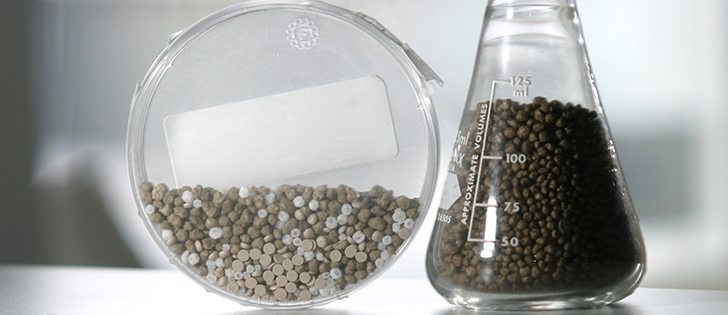Saskatoon installs system | Process removes nutrients and produces a granular fertilizer
A Vancouver company that recovers phosphorus, nitrogen and other crop nutrients from municipal wastewater is hoping its deal with the City of Saskatoon is the first of many similar agreements to be signed in Western Canada.
Ostara Nutrient Recovery Technologies recently installed a $4.5 million nutrient recovery system in Saskatoon’s wastewater treatment plant.
The system is expected to recover about 300 tonnes of phosphorus-rich granular fertilizer each year from the city’s wastewater.
The nutrient recovery system is Ostara’s fifth in North America and its first in Canada.
Read Also

Alberta researcher helps unlock the economics of farming
Lethbridge Polytechnic researcher helping agriculture producers with decision-making tools in economic feasibility
Ostara chief executive officer F. Phillip Abrary said interest in nutrient recovery systems is increasing in Western Canada and throughout North America as concerns about water quality and nutrient loading grows.
In many cities, treated wastewater is discharged into rivers or other natural water bodies.
“There’s a big opportunity all the way (across) Western Canada…,” Abrary said.
“There are other cities in Canada that are looking at this now very seriously and some are already in design phases.
“It is our hope and expectation that (Saskatoon’s) leadership will inspire other Canadian cities … to take advantage of available technologies….”
Ostara’s nutrient recovery system uses a proprietary technology developed at the University of British Columbia.
The technology, known as Pearl, removes roughly 75 percent of the phosphorus and 10 percent of the nitrogen found in treated municipal waste water.
Once removed, the nutrients are processed into a granular fertilizer known as Crystal Green.
Crystal Green is a 5-28-0 formulation that is normally sold to commercial fertilizer blenders and distributers.
In most cases, it is used as a component in high-value fertilizer blends that are marketed to turf producers, golf courses and gardeners.
Ostara is hoping its product will also be used in high value agricultural applications such as fruit and berry orchards and vegetable farms.
“We don’t make enough of the fertilizers to ever attempt to go after large agricultural applications … (but) we’re slowly moving into specialty agriculture,” Abrary said.
Ostara’s four existing North American plants — two in Oregon, one in Pennsylvania and one in Virginia — produce about 2,000 tonnes of Crystal Green per year, although production is expected to double in the next year or so as new plants in Saskatoon, Wisconsin and the United Kingdom come on line.
The Saskatoon plant is projected to produce roughly 300 tonnes of product per year, although capacity could increase to about 700 tonnes.
Unlike many other fertilizers, Crystal Green is a slow-release product that does not dissolve when it contacts water.
The nutrients are released over a longer period of time, meaning fewer applications are required.
Nutrient losses caused by runoff are also significantly reduced.
Saskatoon mayor Don Atchison said employing Ostara’s technology will ensure that the city’s wastewater contains fewer nutrients when it is discharged into the South Saskatchewan River.
It will also prolong the life expectancy of the city’s water treatment plant and water lines.
Over time, excess nutrients can accumulate in municipal waste water lines forming a concrete-like substance known as struvite, which can block flow and increase maintenance or infrastructure replacement costs.
Officials said Saskatoon spends millions of dollars per year to control struvite.
The city of Saskatoon currently treats about 90 million litres of wastewater per day.
















